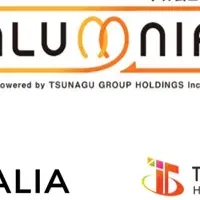
The Association for Dental Safety Unveils New Nonprofit for Enhanced Dental Health Standards
The ADS Institute: Elevating Dental Safety Standards
In a pivotal move for the dental healthcare sector, the Association for Dental Safety (ADS) has launched the ADS Institute for Dental Safety and Science. This new nonprofit organization, transitioning from its former identity as OSAP, is designed to tackle the increasing need for standardized dental infection control guidelines in the United States. With the discontinuation of the CDC's Division of Oral Health on April 1, this initiative aims to bridge the gap left behind in infection prevention practices, ensuring that no patient has to risk their health when seeking dental care.
A New Era for Dental Care
Chaired by Eve Cuny, a prominent figure with over 30 years of experience in infection control and patient safety, the ADS Institute is set to reassert its commitment to safe dental practices. Cuny's leadership brings a wealth of knowledge aimed at maintaining the integrity and safety of oral healthcare environments across the nation. “Everyone should feel secure when they visit their oral healthcare provider,” Cuny emphasized, underlining the institute's mission to enhance the safety frameworks guiding dental practices.
Historically, ADS has worked in tandem with federal health authorities to shape dental safety guidelines. The new institute plans to build on this legacy, promoting collaborative strategies between public and private sectors to reinforce safety standards statewide.
Addressing Immediate Challenges
One of the key immediate objectives of the ADS Institute is the revision of the “Guidelines for Infection Control in Dental Health-Care Settings.” These guidelines serve as a vital resource for dental professionals and were last formally updated by the CDC in 2003. The current public health landscape and historical challenges such as waterline contamination incidents in states like Georgia and California necessitate a revised focus on safety protocols.
Earlier reports have revealed serious systemic infections linked to untreated waterlines, highlighting the urgent need for clear protocols. In response, the ADS produced a white paper outlining efficient testing and treatment methodologies for dental waterlines, which has been instrumental in revising state and national guidelines.
Impact During the Pandemic
The COVID-19 pandemic further underscored the importance of robust infection control measures. In collaboration with the American Dental Association (ADA), the ADS provided much-needed direction through expert-led webinars, offering over 150,000 views of critical safety information for dental practitioners. These efforts not only educated but also empowered dental professionals to work safely amidst health crises.
Looking Forward
The ADS Institute is not resting on its laurels; future plans include the development of educational content, risk assessment tools, and extensive training programs to ensure that providers are well-equipped with the latest safety standards. This will enable dental professionals to maintain quality and safety in their practice, essential for patient and practitioner protection alike.
As stated by Michelle Lee, the executive director of ADS, “Our dedication to advancing dental safety has never been clearer.” The institute is poised to lead an essential transformation in dental health practices, fostering an environment where safety and quality care are paramount.
Numerous associations across the healthcare spectrum have voiced their support for the establishment of the ADS Institute. Brett Kessler, ADA president, spoke to the importance of this initiative: “Oral health is a cornerstone of overall well-being,” emphasizing the shared goal of ensuring high-quality care.
Conclusion
With the formation of the ADS Institute for Dental Safety and Science, the future of dental healthcare appears promising. Armed with evidence-based resources and the backing of the national dental community, the ADS is ready to navigate the complexities of infection control. As it moves forward, it will continue to advocate for policies that secure safe, effective dental practices that benefit both patients and professionals alike. In doing so, it reinforces the belief that a valuable dental visit is a safe one, laying the groundwork for improved public health on a broad scale.
For those interested in further developments and initiatives, the ADS encourages exploration of their resources at myads.org.
Topics Health)










【About Using Articles】
You can freely use the title and article content by linking to the page where the article is posted.
※ Images cannot be used.
【About Links】
Links are free to use.